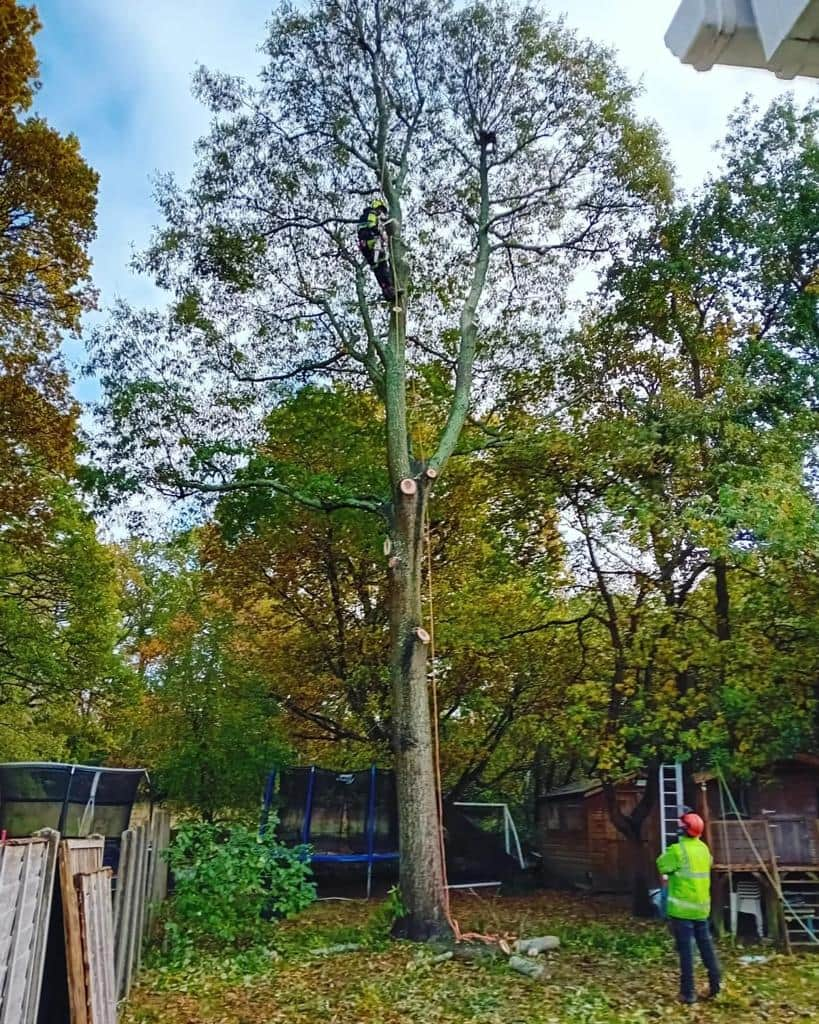Regular tree trimming is often misunderstood as simply a method for maintaining appearance. However, when done correctly and at the right time, pruning plays a crucial role in the health and longevity of trees. Strategic cutting encourages stronger growth, prevents disease, and enhances the overall structure of the tree. Understanding how and when to trim can make a significant difference in tree health and vitality.
How Tree Pruning Encourages Growth
1. Removing Weak or Diseased Branches
One of the primary reasons for pruning is to remove dead, diseased, or weak branches. If left unchecked, these branches:
- Drain energy from the tree, reducing overall growth.
- Increase the risk of disease spreading to healthy sections.
- Pose a safety hazard if they become unstable.
By cutting back compromised limbs, the tree can redirect nutrients and energy to healthier branches, encouraging stronger, more vigorous growth.
2. Promoting New Growth and Regeneration
When a tree is pruned properly, it stimulates new growth by encouraging the formation of fresh buds. This is particularly effective for:
- Young trees that need structural shaping.
- Mature trees that require rejuvenation.
- Flowering and fruit-bearing trees, improving yield and quality.
The removal of old or crowded branches creates space for sunlight and air circulation, helping to nourish new shoots.
3. Strengthening Tree Structure
Proper pruning enhances a tree’s natural structure, reducing the risk of future breakage. This is particularly important for:
- Trees in urban areas where weak branches could pose risks to buildings and pedestrians.
- Species that naturally develop dense growth, which can cause internal branches to become starved of light and nutrients.
A well-balanced tree is more resistant to harsh weather conditions and long-term damage.
Timing Matters: When to Trim for Best Results
1. Winter Pruning for Structural Growth
Pruning during the dormant season (late winter) allows trees to heal quickly and focus on new growth in the spring. Benefits include:
- Clear visibility of the tree’s framework, making it easier to remove unwanted branches.
- Reduced stress on the tree, as there is less sap loss.
- Lower risk of pest infestations, as many insects are inactive in winter.
This is an ideal time for shaping young trees and addressing structural weaknesses.
2. Spring and Summer Pruning for Growth Control
Lighter pruning in spring and early summer helps to:
- Manage excessive growth, ensuring a tree doesn’t become too dense.
- Maintain shape and size for trees in confined spaces.
- Remove any weak limbs that may have suffered damage from winter weather.
Pruning during this period should be minimal to avoid excessive stress on the tree.
3. Autumn Pruning: When to Be Cautious
Autumn is generally not the best time for heavy pruning, as trees are preparing to enter dormancy. However, minor maintenance trimming can be done to:
- Remove dead or damaged branches before winter storms.
- Prevent falling debris from causing damage to property or pathways.
Heavy pruning in autumn can stimulate new growth too late in the season, leaving fresh shoots vulnerable to frost damage.
The Right Techniques for Effective Pruning
1. Identifying the Correct Branches to Remove
- Focus on removing dead, diseased, or crossing branches.
- Keep the tree balanced, avoiding excessive trimming on one side.
- Cut just above a healthy bud or lateral branch to encourage proper healing.
2. Using the Correct Cutting Methods
- Make clean, precise cuts using sharp tools to avoid unnecessary damage.
- Use the three-cut technique for larger branches to prevent tearing.
- Avoid leaving large stubs, as these can become entry points for pests and disease.
3. Avoiding Over-Pruning
Over-pruning can weaken a tree, reducing its ability to photosynthesise and recover. A general rule is to never remove more than 25% of the tree’s canopy in a single session.
Conclusion
Pruning is much more than just a method for keeping trees tidy—it is a vital practice that promotes healthy growth, prevents disease, and strengthens tree structure. The key to effective pruning lies in timing, technique, and understanding the needs of each tree.
If you need professional tree trimming services in Charlton Kings, Gloucestershire, our experienced team provides expert care to ensure your trees thrive. Contact us today for tailored advice and high-quality tree maintenance services.
Call us on: 01242 569 996
Click here to find out more about EM Tree Surgery Charlton Kings
Click here to complete our contact form and see how we can help with your tree needs.

